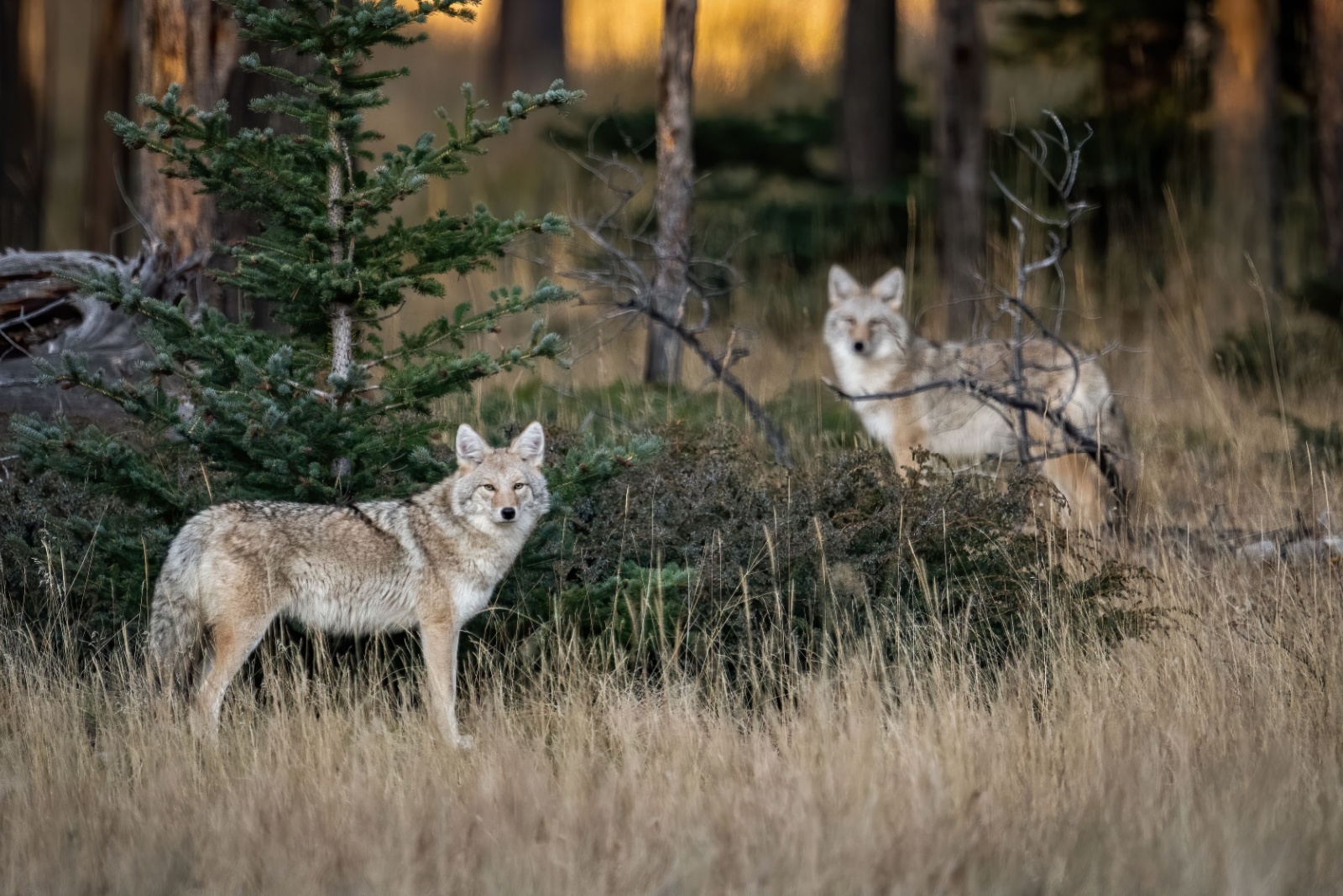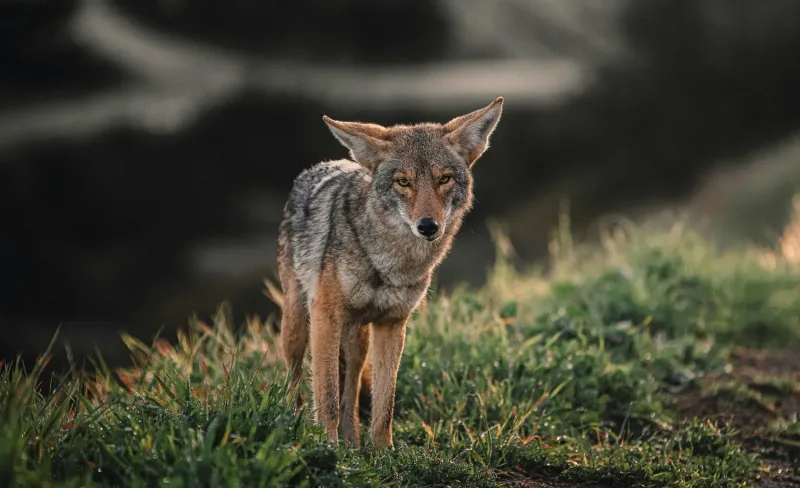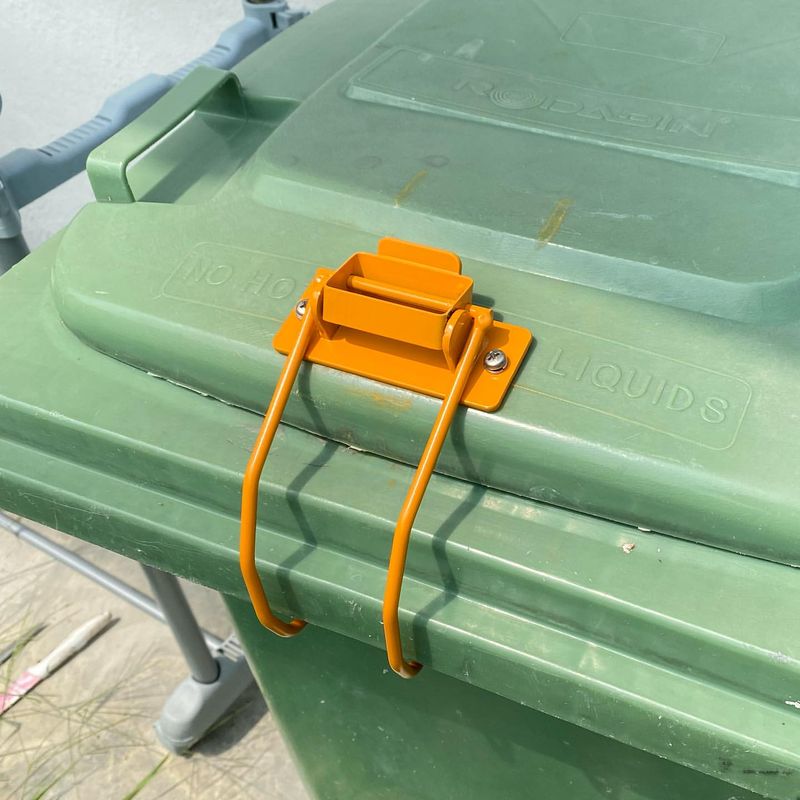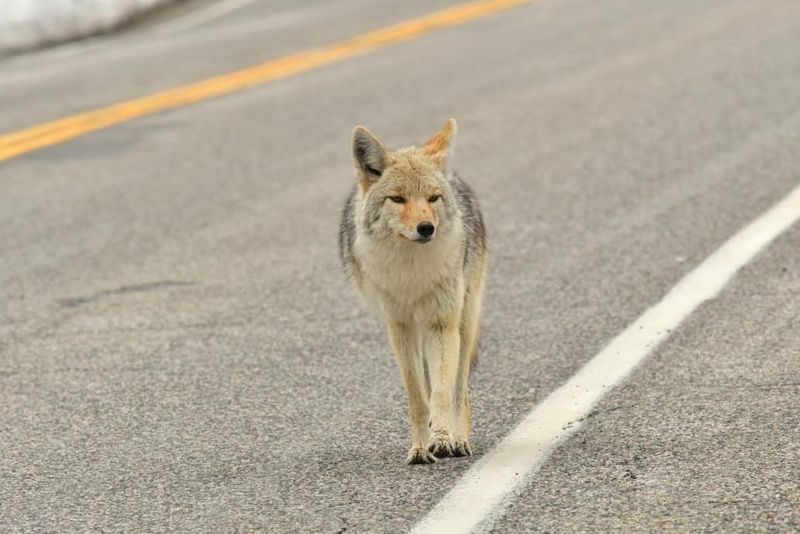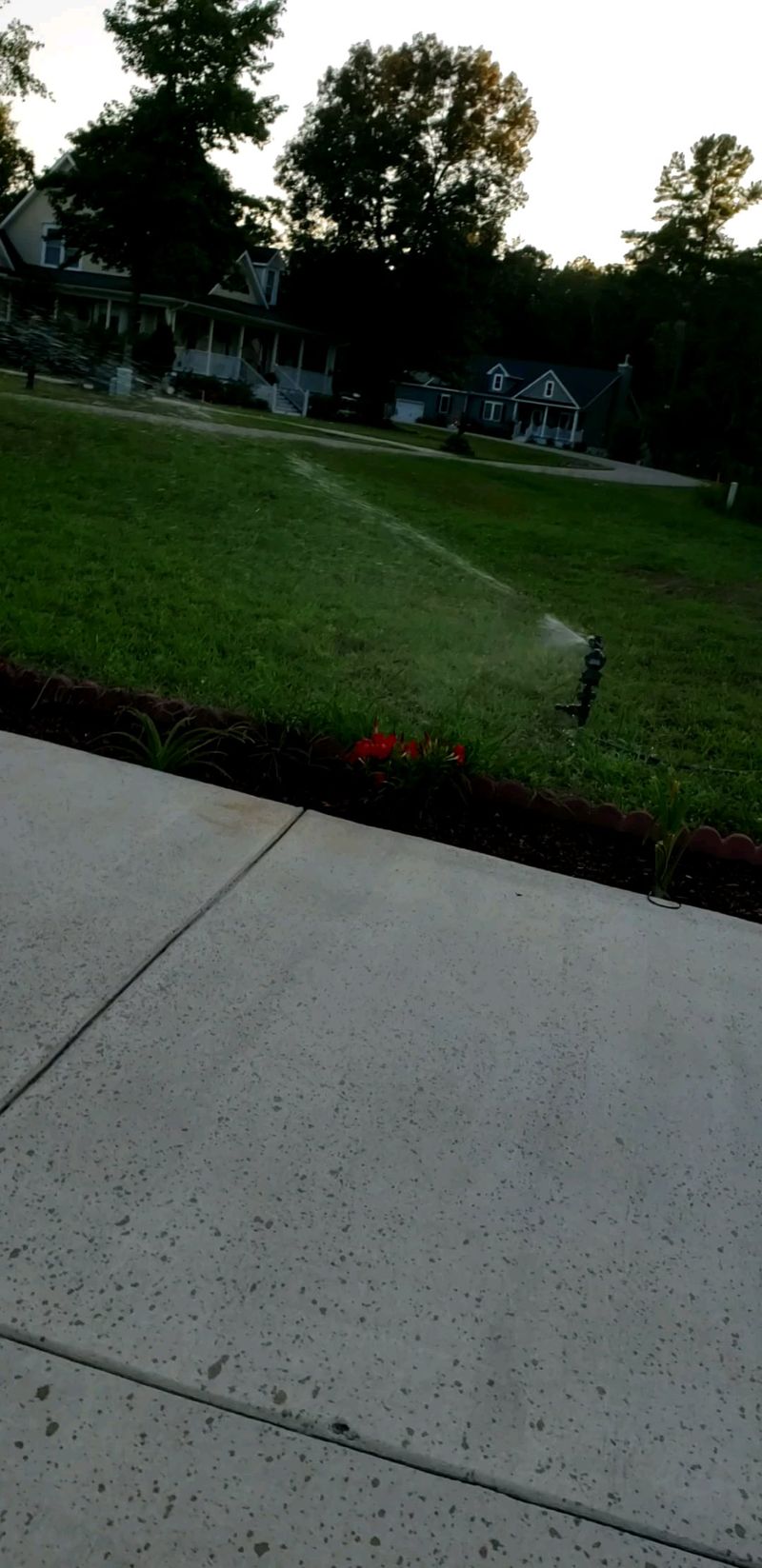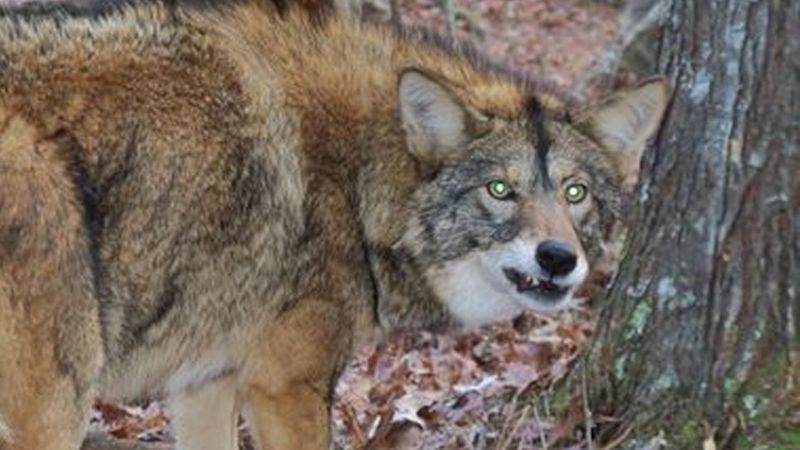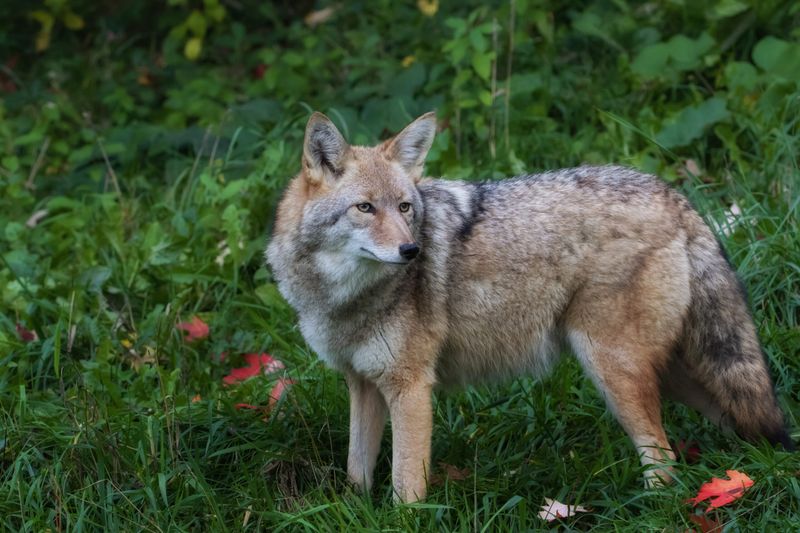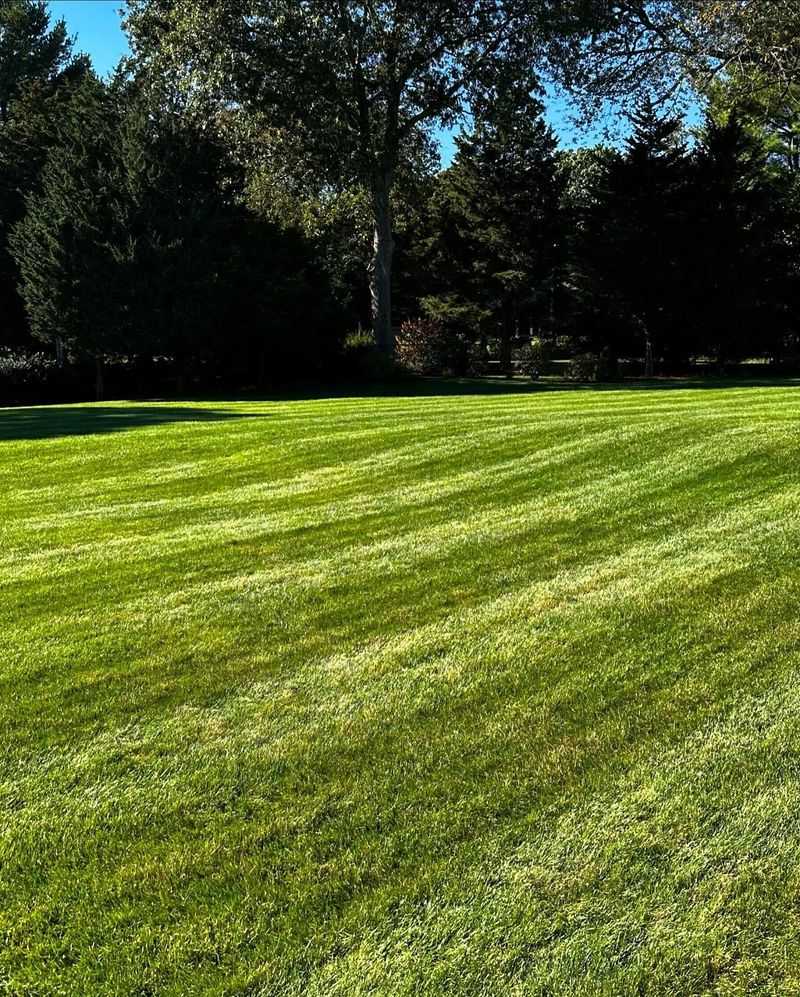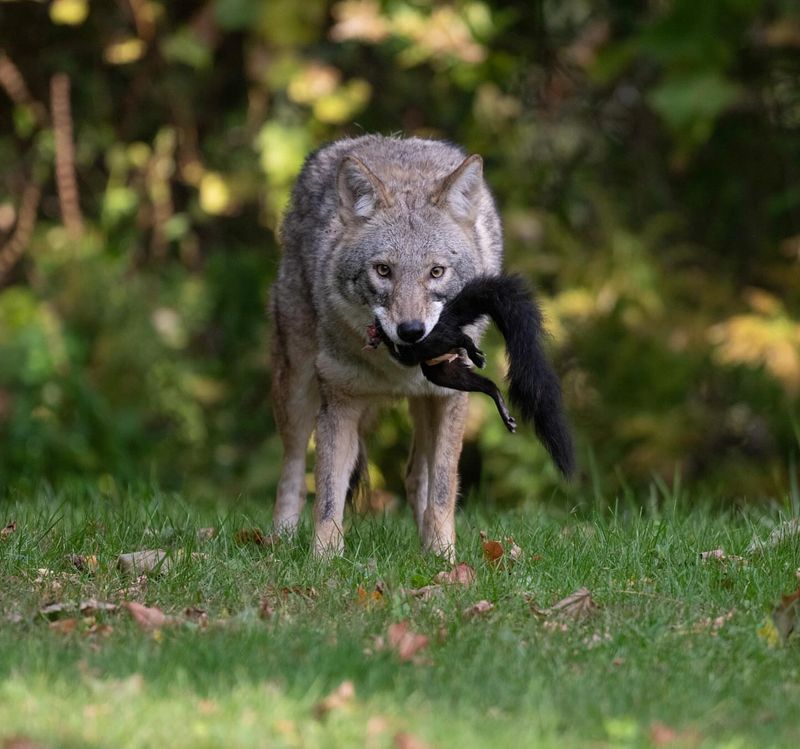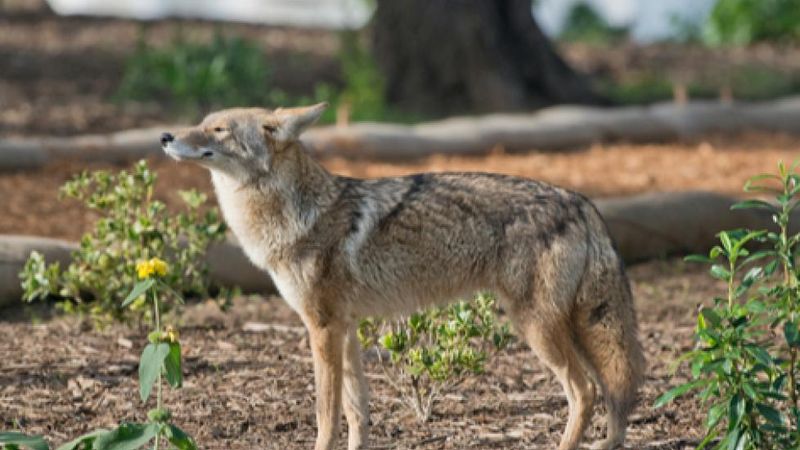Spotting a coyote in your Pennsylvania yard can be a surprise, especially as they become more common in suburban areas. These resourceful animals are learning to navigate human spaces. Their visits often reflect changes in habitat and food availability.
Coyotes are naturally wary, but they’re drawn to gardens, compost piles, and even pet food left outside. As they adapt, it’s important we don’t encourage close contact. A little caution goes a long way in keeping wildlife wild.
Knowing how to respond—calmly and confidently—helps protect your family and the coyote. Secure attractants, make noise to deter lingering, and avoid feeding them. It’s all part of maintaining a respectful balance with nature.
1. Make Loud Noises To Scare It Away
Coyotes naturally fear humans and will typically retreat when confronted with loud, unexpected sounds. Clap your hands vigorously, bang pots together, or use a whistle to create noise that sends them running.
I’ve found that an air horn works particularly well in my Pennsylvania garden. The sudden blast usually sends even the boldest coyote scampering back toward the woods.
Remember that consistency matters. Teaching coyotes that your yard isn’t a safe zone requires regular reinforcement whenever they appear near your property.
2. Remove Food Sources From Your Garden
Garden areas often contain unexpected coyote attractions. Fallen fruit from apple trees, unsecured compost bins, and accessible vegetable beds can all serve as dinner invitations for hungry predators.
My neighbor in Pennsylvania learned this lesson when coyotes repeatedly visited her yard, drawn to overripe strawberries and tomatoes that had fallen to the ground.
Harvest ripe produce promptly, clean up fallen fruits, and consider installing fencing around edible gardens to eliminate these tempting snacks from your landscape.
3. Your Trash Cans Need Wildlife-Proof Lids
Unsecured garbage creates an irresistible buffet for opportunistic coyotes. These clever creatures can easily topple and open standard trash containers, especially when they contain food scraps or packaging.
After repeatedly finding my trash scattered across my Pennsylvania lawn, I invested in wildlife-resistant containers with locking mechanisms. The difference was immediate and dramatic.
Store bins inside your garage until collection day whenever possible, and consider using bungee cords as an extra security measure for lids that don’t lock.
4. Bring Pets Inside When Coyotes Are Present
Small pets can unfortunately become targets for hungry coyotes looking for an easy meal. Cats and small dogs are particularly vulnerable when left unattended in yards, even those with decorative fencing or garden features.
I once noticed a coyote lingering near my Pennsylvania neighbor’s rose garden while their Yorkie was outside alone. Thankfully, we spotted the danger in time.
Keep a close eye on your pets during dawn and dusk hours when coyotes are most active, and never leave them unsupervised in areas where coyotes have been spotted.
5. Install Motion-Activated Sprinklers Around Prized Plants
Motion-activated deterrents offer an effective, humane solution for keeping coyotes away from your cherished garden spaces. These devices deliver a harmless but startling burst of water when triggered by movement.
For me, placing these sprinklers near my Pennsylvania native plant garden has prevented coyotes from using it as a pathway to other parts of my property.
The sudden spray of water creates an unpleasant experience that teaches coyotes to avoid your yard without causing harm to these important members of our ecosystem.
6. Create Garden Barriers With Strategic Plantings
Pennsylvania gardeners can discourage coyote traffic by incorporating thorny, dense shrubs around property perimeters. Barberry, holly, and native roses create natural barriers that coyotes prefer to avoid.
In my own yard, a mixed border of prickly plants has successfully redirected wildlife to skirt around rather than cut through my garden beds.
Beyond deterring unwanted visitors, these plantings provide habitat for beneficial birds and insects, creating a win-win situation for your garden ecosystem.
7. Contact Pennsylvania Wildlife Officials If Behavior Seems Unusual
Most coyotes display natural wariness around humans, but occasionally they may exhibit concerning behaviors. A coyote that appears sick, unusually aggressive, or shows no fear of people requires professional attention.
When my Pennsylvania garden became a regular daytime hangout for a limping coyote, I contacted our local wildlife management office for guidance.
The Pennsylvania Game Commission can assess whether intervention is necessary and provide specific advice for your situation, especially if the animal seems ill or dangerous.
8. Night Lighting Deters Twilight Garden Visitors
Coyotes prefer to operate under the cover of darkness, making well-lit yards less appealing for their nighttime prowling. Motion-activated flood lights strategically placed around garden borders can startle and discourage these nocturnal visitors.
After installing solar-powered lights along my Pennsylvania property line, coyote sightings dropped significantly. The sudden illumination disrupts their comfort zone.
For maximum effectiveness, position lights to eliminate shadows where coyotes might hide, particularly near dense shrubs or woodpiles in your garden areas.
9. Maintain Tidy Landscapes Without Dense Hiding Spots
Overgrown areas provide perfect hiding places where coyotes can rest undetected during daylight hours. Regular maintenance of your Pennsylvania garden removes these potential dens.
I’ve found that keeping brush piles away from my vegetable garden and regularly trimming under evergreens has made my yard less inviting to wildlife seeking shelter.
Pay special attention to spaces under decks, around woodpiles, and beneath dense shrubs where these animals might otherwise find comfortable resting spots near your garden areas.
10. DON’T Run Away When You Spot One
Running triggers a coyote’s predatory chase instinct, potentially making a neutral encounter dangerous. Instead, stand your ground firmly if you spot one while gardening or enjoying your Pennsylvania yard.
I learned this firsthand when encountering a coyote near my native plant garden last summer. By standing tall and maintaining eye contact, I communicated that I wasn’t prey.
Make yourself appear larger by raising your arms while facing the animal directly. This posture establishes dominance and usually prompts the coyote to retreat from your garden space.
11. DON’T Leave Pet Food Outside Near Your Plants
Outdoor pet dishes create powerful attractants that can draw coyotes directly into your carefully tended Pennsylvania garden spaces. Dog and cat food emit strong aromas that carry far beyond your property lines.
My rose garden became a regular coyote thoroughfare until I realized the connection to my habit of feeding my cats on the patio. The visits stopped almost immediately after bringing feeding indoors.
Even empty bowls retain enough food residue to attract wildlife, so bring all pet dishes inside after feeding times.
12. DON’T Try To Tame Or Feed Wild Coyotes
Despite their dog-like appearance, coyotes are wild animals that should never be treated as potential pets or garden companions. Offering food creates dangerous dependencies and erodes their natural fear of humans.
A well-intentioned family in my Pennsylvania neighborhood learned this painful lesson after regularly leaving scraps for what they called “their coyote” near their vegetable garden.
The increasingly bold animal eventually became aggressive toward neighborhood children playing near the gardens. Remember that a fed coyote often becomes a dangerous coyote.

